robot
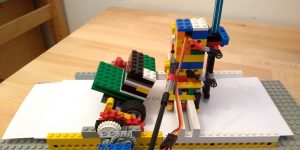
Plottegoino
Benjamin Aster (AT)
Plottegoino is an Arduino-controlled Lego plotter that can print any desired letters.
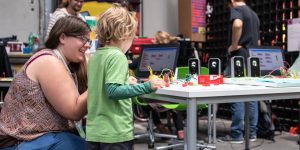
abc-Dojo: digital education for children 5 years and older
Pädagogische Hochschule Oberösterreich (Teachers' College of Upper Austria)
At the abc-Dojo you can program floor robots and try to trick an artificial intelligence or even create a speaking image!

Sunny Side Up
AATB – Andrea Anner (CH), Thibault Brevet (FR)
Sunny Side Up, a robotic sun developed by studio AATB, proposes a contemporary take on the archaic typology of the sundial. From sunrise to high noon and sunset, Sunny Side Up brings the movement of this celestial body close to the viewer. In the Anthropocene age, Sunny Side Up raises questions about our current disconnect from the planet and circadian rhythms.
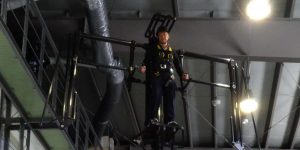
Big Robot Mk.2
Hiroo Iwata (JP)
This video installation shows the largest movable robot in the world. Large humanoid robots, such as Gundam or Macros, are popular in Japanese animation and Manga. What if robots of this kind appeared in the real world? The existence of real large-scale robots may inspire the audience to be courageous. Thus, it has potential as an art form. The Big Robot Project aims to develop the world’s largest rideable robot. The Big Robot Mk.2 is an extension of the *Big Robot Mk.1* which was exhibited at Ars Electronica 2016.
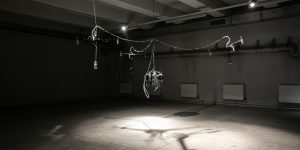
Poise→[d]
Dmitry Morozov / ::vtol:: (RU)
Poise→[d] is a hybrid installation that uses chemical and physical reactions to control its behavior and sound synthesis. The installation consists of the main control unit and three balancing robots. The main control unit has three core systems where the reactions occur, with everything analyzed by a computer algorithm using cameras.
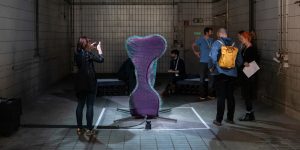
Doing Nothing with AI
Emanuel Gollob (AT)
In order to promote a doing nothing state in 2019, Emanuel Gollob and his team created a neuroreactive robotic installation, using live EEG-measurements and a real-time adapting choreography. Over time a generative algorithm increasingly learns to move the installation in a way that best supports the viewer’s mind-wandering process.

Lucifer
Kari Massey (DE)
Lucifer is a small robot, which reacts to light and gives light. If Light were a living thing, how would we encounter it? How would we communicate with each other? With 3 joints, 3 degrees of freedom, Lucifer is able to react with a wide range of motion. He addresses us with his movements. How do we react to this feedback? He brings light and he seeks light. Do we accept his offer? Or will we try to take away the light he seeks? An experimental reflection on human behavior.

Tracing
Ao Yanxi (CN)

Computers that Learn to Listen
Institute of Computational Perception, Johannes Kepler University (JKU) Linz (AT)
A set of 8 short demo videos on latest results from the world of scientific research: computers learn to listen to and “understand” music; an autonomous drum robot recognizes beat and rhythm; musical computer companions turn music pages for pianists, listen to orchestras, provide synchronized scores to concert audiences, and accompany soloists.
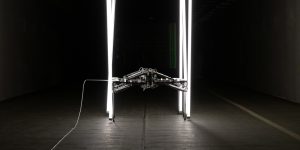
CRYPTID
Michael Candy (AU)
A monumental robotic light sculpture, CRYPTID exists as a vibrant anomaly in contrast to contemporary automata, sharing a presence both radiant and reserved.


